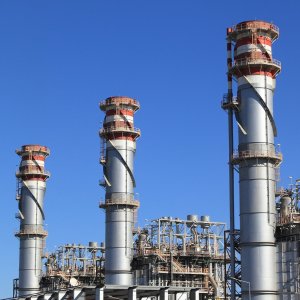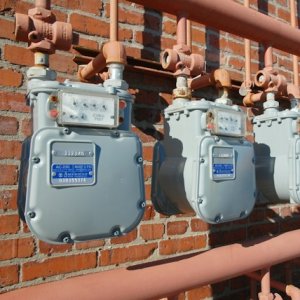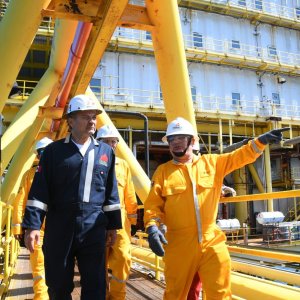Constitutional Reform and the New LIE: What’s Next?

STORY INLINE POST
Two important developments have laid the new foundations for Mexico’s national electricity sector:
1) Last year's changes to the LIE remained in effect after the Supreme Court of Justice of the Nation reached only seven votes in favor of declaring their unconstitutionality, short of the eight votes required to declare the changes invalid.
2) In Congress, the Chamber of Representatives, a qualified majority was not obtained to advance the Constitutional Reform proposal, falling short by approximately 50 votes.
With this result, a "generalized sentiment of relief" was felt by , national and foreign businessmen and part of society. Bof-A Securities, in its April 18 report, included in Mexico Economic Watch the following: “Electricity bill (sic) rejected = Re-shoring investment accelerated.”
We cannot deny that Mexico’s energy sector is still experiencing a strong polarization surrounding a large number of issues. But as I have done in other articles and panels, I am going to focus on what’s next in regard to aspects on which we can all work together. I will highlight common issues that can and should be pursued.
Let's first look at those parts of the LIE that received the most favorable votes:
- Article 35: allows grouping the interests of private players, generators and users and provides the possibility to carry out private investments; especially at the local/regional level, this can trigger a large amount of investment.
- The quality and reliability of the national electricity system remains a top priority.
- With eight votes in favor, the importance of the technical feasibility to connect loads and generation to the electrical network is established; at the same time, it should not interfere with free non-discriminatory access to the network. This aspect becomes especially relevant in conjunction with Article 35 mentioned above.
- Finally, with five votes in favor, we have the issue of self-supply, which for many is the main cause of disagreements.
In addition, CFE has awarded important generation projects with combined cycles and CRE has authorized very interesting self-supply projects to industrial companies. Given the growth in energy demand, we do not foresee in the short term a significant improvement in its quality. We have become accustomed to evaluating investments in on-site generation from a “light financial” perspective, missing major opportunities for technological improvements.
Today, all the participants understand that on-site generation must handle a technological level that ensures the availability and quality of the electricity supply and that helps companies meet their clean energy consumption requirements. Surprisingly, the latest modification to the self- supply regulations is in line with opinions from the financial sector that do not like to finance- on-site generation that delivers electrical surpluses to the general electrical network.
This is an irrational and short-sighted limitation and I am sure that both the 4T and the financial sector will react and promote the fact that that surpluses from on-site generations help stabilize the surrounding grid. This is obviously not the case with the current low technical requirements because when there is a general blackout, most on site generations stop delivering energy when the user requires it most.
In regard to the so called legacy self-supply contracts that basically sell energy to third parties, considered the area of greatest polarization, we are witnessing an increased number of companies seeking voluntary solutions to these conflicts that hamper the rest of the electricity sector.
On the positive side: Qualified Supply continues to grow and offers more options to generators and energy consumers. Companies, such as Energy to Market, play an important role in meeting users’ energy requirements as well as generators’ financial requirements.
We have large areas of opportunity that can solve significant problems in our electricity sector, clearly without modifications to the Constitution. The private sector should present and promote the following:
- A voluntary migration to the LIE as the original self-supply permits expire. The migration process can be significantly simplified.
- The implementation of the grid code to guarantee a vast improvement in the quality of the electricity supply.
- Establish a regional limit of generation capacity by a single company. Here, both COFECE and CRE must define maximum market shares that a company can accumulate. Given the low elasticity of demand, minimal variations in generation have a strong impact on market prices. Authorizing too much power for CFE was avoided. Now, we must avoid the creation of private oligopolies. The generation capacity in the hands of a regional business group should never exceed 15 percent to 20 percent of the total installed capacity.
- Recognize that on-site generation with delivery of surpluses to the network encourages competition and favors all users.
- Modification of the current tarif structure so that the back-up cost the network provides to users is actually charged to them. Today CFE offers back up which is not charged to users. If my on-site generation does not generate electricity, then CFE automatically provides me with all the missing energy.
If the support has a cost, we will notice great investments in batteries. The tariff structure must favor technological modernization and support efforts to implement energy efficiency programs.
The fact that opportunities could exist today sounds a bit utopian considering the current polarization in Mexico but I firmly believe that a discourse that highlights the points where progress can be made will allow us to strengthen the electricity sector and with it, new industrial investments.
























